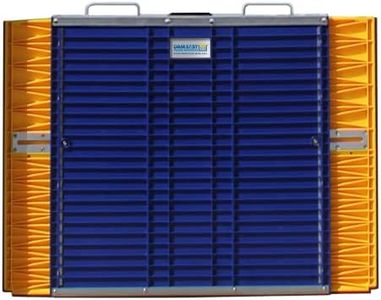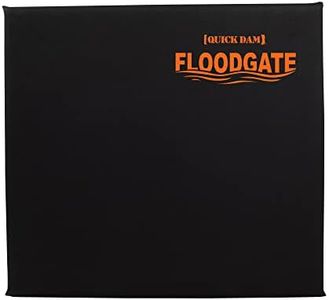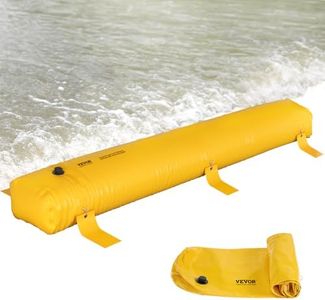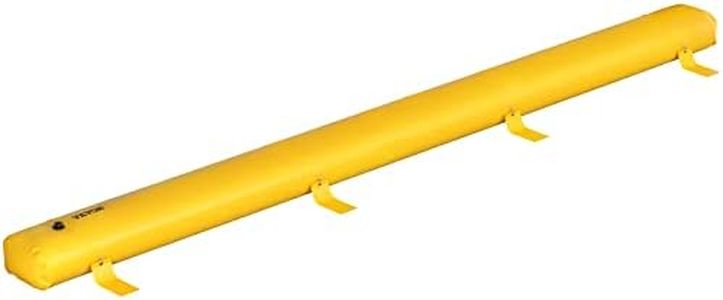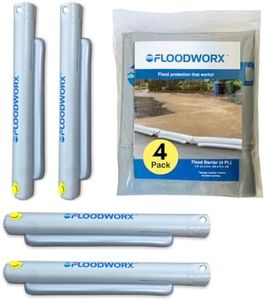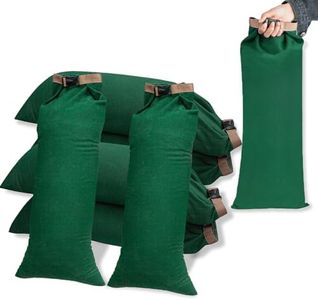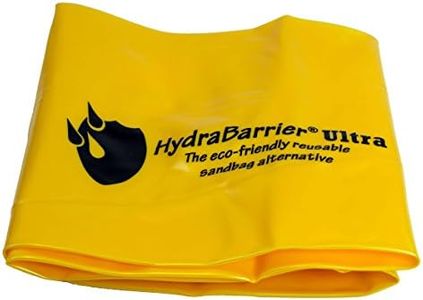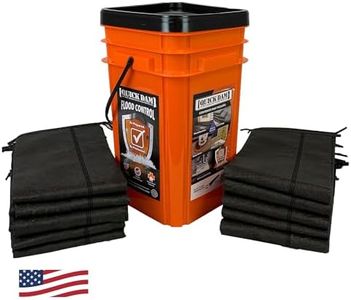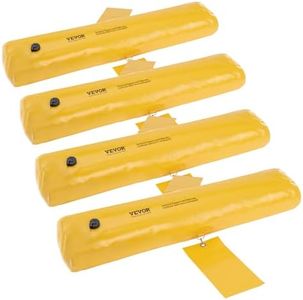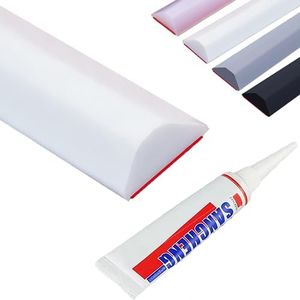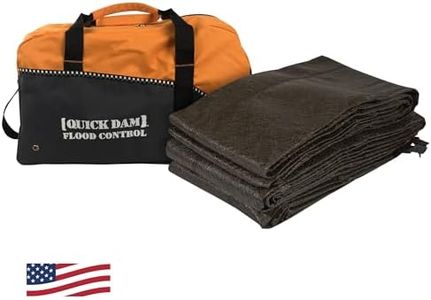We Use CookiesWe use cookies to enhance the security, performance,
functionality and for analytical and promotional activities. By continuing to browse this site you
are agreeing to our privacy policy
10 Best Flood Barriers
From leading brands and best sellers available on the web.Buying Guide for the Best Flood Barriers
Choosing the right flood barrier is important because it helps protect your property or area from water damage during heavy rains, storms, or flooding events. There are many types of flood barriers available, each with different materials, designs, and features. Before making a purchase, you should consider where you need the barrier, how quickly you need to deploy it, and how much water you expect to defend against. The right flood barrier can offer peace of mind and reduce the risk of expensive damage.Type of BarrierFlood barriers come in several main types, such as sandbags, water-filled barriers, modular panels, or inflatable tubes. This spec refers to the basic design and deployment method of the barrier. Traditional sandbags are cheap but time-consuming to set up, water-filled barriers are quicker but require a water source, panel barriers can be sturdy and reusable, and inflatable barriers are both fast to set up and store. Pick a type based on how quickly you need deployment, who will be installing them, and whether you want something temporary or reusable for future use.
Height and LengthThe height and length refer to the dimensions of the barrier and determine how much water the barrier can block and how much area it can cover. Heights typically start at a few inches and can be several feet tall, while lengths can vary from short segments to devices that stretch for many meters. If you expect shallow flooding, a shorter barrier may be enough, but deeper flooding needs a taller barrier. Measure the area you want to protect and the typical flood levels in your region to decide on the right size.
Material and DurabilityMaterials used in flood barriers include plastic, metal, fabric, or rubber. This impacts the barrier's strength, longevity, and resistance to water, UV, and wear. Lightweight materials are easier to handle but may not last as long, while sturdier materials can be heavier but provide stronger, more reliable defense and can be reused. Consider how often you expect to use the barrier, the local climate, and whether you prefer something lightweight or heavy-duty.
Ease of InstallationThis spec covers how quickly and simply a barrier can be put in place when a flood threat arises. Some barriers require no tools and only one person to set up, while others might need a team and more time. Barriers that are easy to move and set up are ideal for emergencies or when quick action is needed, while more complex options may be fine for planned, permanent installation.
ReusabilityReusability refers to whether the barrier can be stored and used again or is single-use only. Sandbags often need to be discarded after use, while panels, water-filled tubes, and inflatable options can be drained, cleaned, and put away for next time. If you live in a flood-prone area and expect to use barriers regularly, opting for a reusable solution can add long-term convenience and reduce waste.
